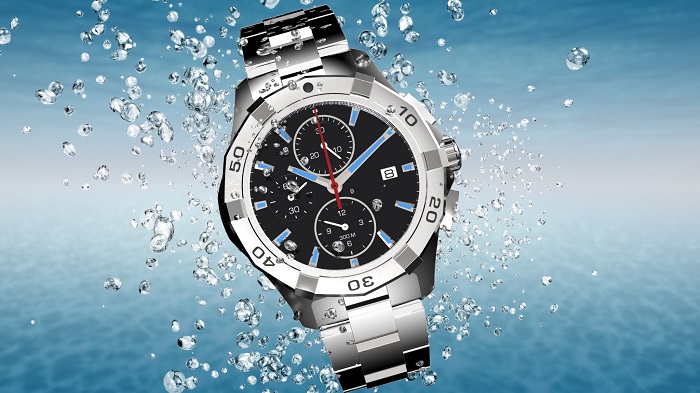How to solve the problem of water entering the mechanical watch?
![]() Aug 15,2023
Aug 15,2023
![]()
Although mechanical watches are water resistant and registered, preventing water from entering a mechanical watch is critical to maintaining its functionality and longevity. Mechanical watch manufacturers suggest that if your mechanical watch gets water, you must not deal with it casually, and you must have a scientific method. But in the process of using the watch, is the best way to prevent water from entering.
1. Understand the waterproof level: Check the waterproof level of the watch. The water resistance rating of most watches is expressed in meters or ATMs (atmosphere). This rating indicates how deep the watch can withstand water pressure without letting water in. Make sure you understand ratings and their limitations.
2. Perform regular maintenance: Mechanical watches require regular maintenance to ensure that their seals and gaskets remain effectively water-resistant. Have your watch serviced by a professional watchmaker at the recommended intervals. They will replace worn gaskets, lubricate the movement, and test the water resistance of the watch.
3. Screw-in crown: A watch equipped with a screw-in crown is more waterproof. When the watch is not in use, make sure the crown is properly screwed in. This prevents water from seeping through the crown opening.

4. Avoid contact with water: Even if your watch has a high waterproof level, it is best to avoid contact with water as much as possible. Take off your watch before swimming, showering, or engaging in water-related activities.
5. Pressure test: If you suspect that the watch has entered water, or the watch has been exposed to water exceeding the rated depth, please have a professional watchmaker conduct a pressure test. Stress testing involves placing the watch in a controlled environment that simulates water pressure. This test can identify leaks and help determine if any components need to be replaced.
6. Avoid extreme temperature changes: Rapid temperature changes may cause the air inside the watch to expand or contract, which may create a pressure imbalance that can lead to water ingress. Avoid exposing your watch to sudden temperature changes.
7. Seal inspection: Regularly check the seals and gaskets of the watch for signs of wear or damage. If you notice any damage, have it replaced by a professional immediately?
8. Avoid crowbar operation: unless you have the proper tools and expertise, please avoid opening the bottom cover of the watch yourself. Opening the case incorrectly could damage the seals and gaskets, allowing water to enter.
9. Use a silicone bag: When storing your watch, especially in humid environments, consider placing a moisture-absorbing silicone bag in the storage area to help reduce moisture buildup.
10. Mechanical watch manufacturer's guidelines: Always follow the manufacturer's waterproofing and maintenance guidelines. If they recommend not exposing your watch to water at all, follow their advice.
11. Special attention should be paid to the following points in the treatment of mechanical watches after entering the water:
(1) Do not shake: Do not shake the mechanical watch, as shaking may cause moisture to diffuse inside and further damage the movement.
(2) Don't press the buttons: Avoid pressing the crown or buttons to avoid pushing moisture into the movement.
(3) Drying treatment: If the mechanical watch gets a lot of water, you can place the mechanical watch in a dry and ventilated place and let it dry naturally. However, it is still necessary to hand over the watch to professional maintenance personnel as soon as possible.
(4) Do not disassemble by yourself: Do not try to disassemble the mechanical watch by yourself, so as not to damage the internal structure. Should be handed over to experienced maintenance personnel.
No mechanical watch in the world is completely waterproof, and over time, the water resistance will weaken due to wear and tear. Mechanical watch manufacturers believe that we should avoid contact with water as much as possible while wearing the watch, especially in swimming and diving sports. The high water pressure can easily cause the watch to enter the water.












